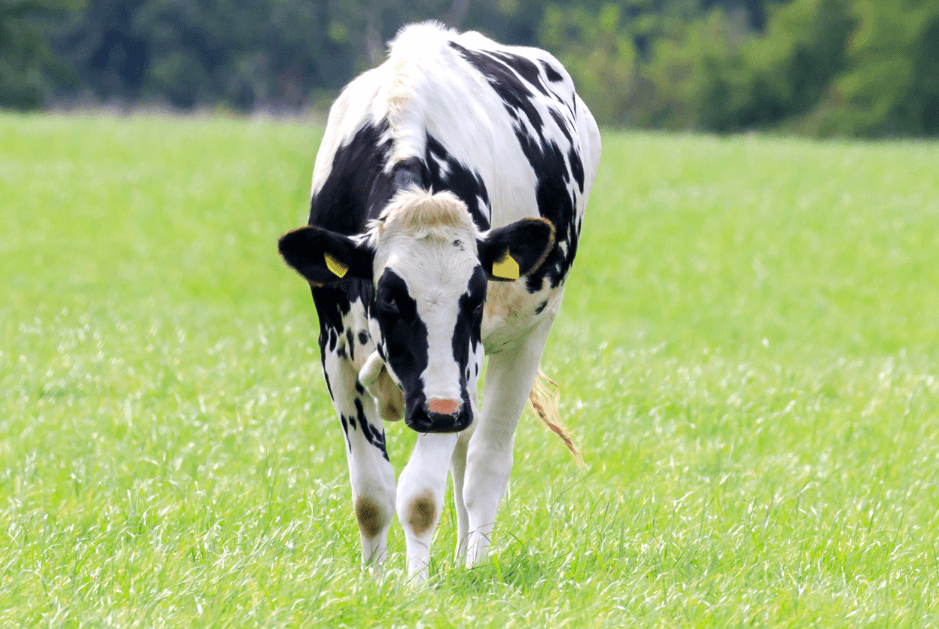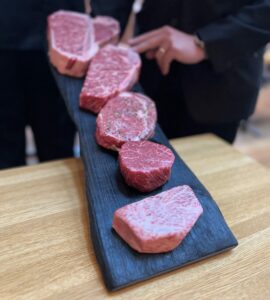

Why talk about Holstein Cattle?
Most people can easily name multiple breeds of dogs off the top of their mind, but how many breeds of cattle are you familiar with?
 In our industry, breed plays an important role in the final product — the breed that has gained the most acclaim by beef aficionados has always been Angus. Think of how often you’ve seen a restaurant menu proudly proclaim their offerings of “Certified Angus Beef”.
In our industry, breed plays an important role in the final product — the breed that has gained the most acclaim by beef aficionados has always been Angus. Think of how often you’ve seen a restaurant menu proudly proclaim their offerings of “Certified Angus Beef”.
Which makes us a bit of outliers to our fellow meatheads, since the breed that we believe is the key to an incredibly tender and flavorful steak is not one typically used in the beef industry — Holstein. The Holstein breed is known primarily for its phenomenal milking abilities; of course we’re talking about the female Holsteins here. Holstein cows make up an amazing 90% of the dairy industry in the United States, compared to other milking breeds such as Jersey or Guernsey.
But what happens to the male offspring of these dairy cows – they won’t have much success in the milking business, so where do they end up? In a nutshell, dairy steers (the males) play a somewhat silent but major role in the beef industry. Despite making up about 15% of the total US beef herd, some studies report that beef from dairy breeds account for up to 30% of all USDA Prime graded beef. So in a nutshell — despite being a smaller percentage of animals used for beef production, they punch significantly above their weight when it comes to highly marbled, top quality steaks.
Can Holstein Cows be Used for Meat?
We get this question often, and we’re going to start with a quick (geeky) explanation of how cattle are referred to.
- Cow: is a female that has had at least one calf
- Heifer: a young female that has not birthed any calves
- Bull: a male who is capable of producing offspring (he’s intact)
- Steer: a male who cannot product offspring (he’s been snipped)
So, back to the question. Yes; Holstein cows can be used for meat, but typically when you deal with meat from Holsteins, it’s coming from steers. While it’s not impossible to find meat from Holstein cows within the United States, it’s a more common occurrence outside of the states.
Why don’t you see a lot of Holstein steaks in butcher shops or on menus?
We would be the first people to admit that there is a good amount of internal bias within the meat industry against using Holstein; you probably have the same type of sentiment within other industries, a common belief of ‘well that’s just not how we do things’. In fact, Bryan jokes that when he was first introduced to Holstein back in the early 2000s, had he known the breed, he would have rejected the product, towing the line ‘that’s a dairy breed, not a beef breed’. It wasn’t until he had already fallen in love with the product that he learned the breed distinction, and as he jokes, the rest is history; we’ve been working almost exclusively with Holstein since then.
Which is better between Holstein Beef vs Angus?
Like so much in the food world, it’s hard to make definitive statements of what is ‘best’ or ‘better’. In our opinion, we think the traits of a great steak are high amount of fine, lace-like marbling, the nuanced depth of dry aged flavor, and a good thickness to the steak itself. Holstein cattle, along with our unique dry aging process, give us that profile.
However, there are certain outliers, and since our goal is to source and provide what we consider ‘best in show’, certain cuts we have decided are better if sourced from your more traditional Angus breed. These cuts include the Hanger Steak, and some variations of Short Ribs.
In conclusion, while the Angus breed may reign supreme in the eyes of many beef aficionados, our journey with Holstein cattle has revealed a hidden gem in the world of steaks. Despite being unconventional in the beef industry, Holstein steers, often overlooked and underestimated, play a vital role in delivering highly marbled, top-quality beef. Our dedication to this unique breed, coupled with our distinctive dry aging process, has allowed us to craft steaks that boast the perfect combination of fine marbling, dry-aged flavor, and a substantial thickness. So, the next time you savor a Holstein steak, remember that excellence in beef can come from unexpected sources, challenging traditional norms and tantalizing taste buds in the process.
